Marc Langlois: Seven Shades Of Grey
August 25, 2015
By J.P. Russell Smith
While Boston-based interior designer Marc Langlois enjoys blending traditional and innovative ideas in his design, his first concern is try to “read” his clients and engage them as much as possible in their project. Marc delights in “statement rooms”, all the while remaining attentive to his client’s personal style. He appreciates a client who’s willing to step out of her comfort zone and take an occasional risk. Last year, a woman with whom he had worked with in the past, approached the designer previously on another house, a late nineteenth-century Colonial Revival in Wellesley. The family had expanded and purchased a lovely Neo-Georgian sited in a hollow in Wellesley Hills. The client has a preference for neutral shades throughout her décor. Over time, Marc has injected an occasional pop of color, creating a home with a remarkably fun, yet elegant, personality.
The client spent the first year in the house struggling with one particular conundrum: a cave-like front room paneled in the darkest mahogany. The room’s ethos could best be described as “dour”. It was foreboding, unwelcoming.
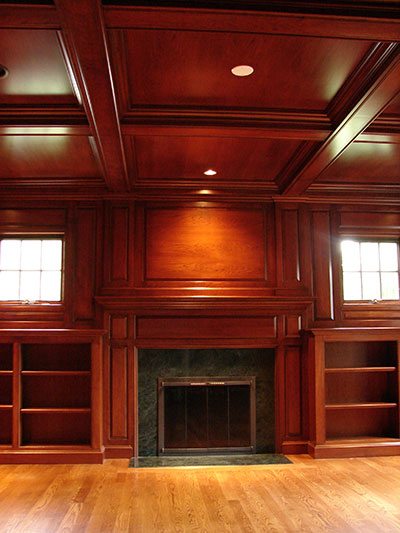
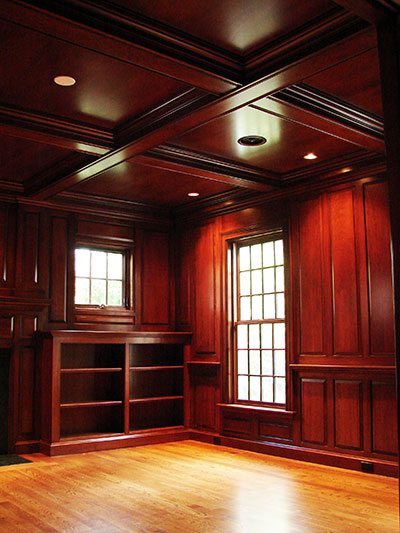
What to do? Marc’s suggestion: paint. The client had done her level best to embrace the room as it was. Various friends tried to convince her to reject the idea of painting over mahogany with the refrain: “It’s just not done”. Now, there is a purist school of thought that might agree with that view. But, in this situation, a young family was in the process of making their house a home. They decided to take the risk (the “quantum leap”, if you will). The couple made the commitment, and that’s when the fun began. Marc and the client began exploring the effects different colors might have on the space. Given the array of neutral hues throughout the house, the client decided she would like some shade of grey; one that would gently contrast with the other spaces, and yet set it apart as a statement.
In deciding which brand of paint to use for this tricky project, Marc settled on “Fine Paints of Europe”, a brand that he’d admired over time. Based in Woodstock, Vermont, Fine Paints has been sourcing the highest caliber product from the Netherlands for over twenty-five years. After poring over a tidal wave of color chips, Marc and his client narrowed their search down to seven shades of grey. Their choice was a lustrous dark grey they hoped would prove a pleasant counterpoint to the lighter, neutral tones of the neighboring rooms.
The color was chosen from the company’s “Hollandlac Brilliant” line, a very high- gloss product. The folks at Fine Paints are serious about their sources. Paint production in Holland has been considered a pursuit of great import for centuries. By the middle of the Baroque Period in the 1600s the Netherlands enjoyed the largest number of resident artists in all of Europe. Led by Rembrandt, these painters demanded an intensity of color in their oils that could be expected to retain their vibrancy and endure for centuries.
The Dutch paintmakers had their marching orders. They embarked on an ambitious plan to develop paints that would please their master artists as well as satisfy the notoriously house-proud Dutch with superior and long-lasting finishes for their homes. By 1800, the technology in Dutch paint creation had evolved into a product recognized the world over as the premier paint available. To this day, Dutch sources continue to combine the finest resins and oils with the highest concentration of finely ground pigments.
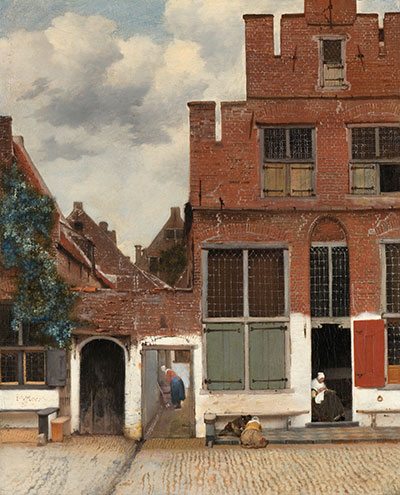
The Little Street, Johannes Vermeer, via Wikipedia
Tony Silva is a man with a passion for paint. The owner of his own painting company for the past thirty-five years, he is much in demand from Marblehead to Lenox, Massachusetts. A fan of Fine Paints himself, it was a pleasure to watch him direct his crew of four as they fastidiously prepared the drawing room for painting. The process is not for the faint of heart. After sanding over the dark panels of mahogany, dusting and vacuuming thoroughly between each pass, the walls are treated with denatured alcohol. Due to the mirror-like effect of the high-gloss Hollandlac, even the slightest fissure in the mahogany would be clearly evident.
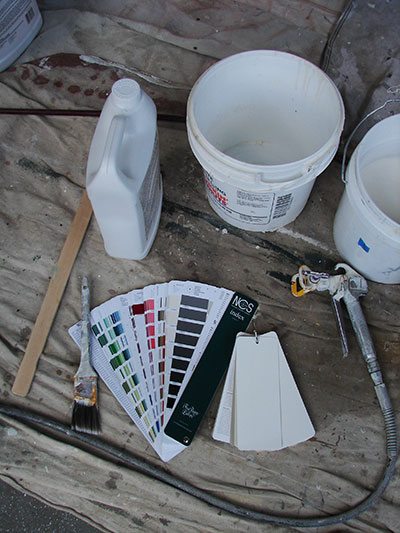
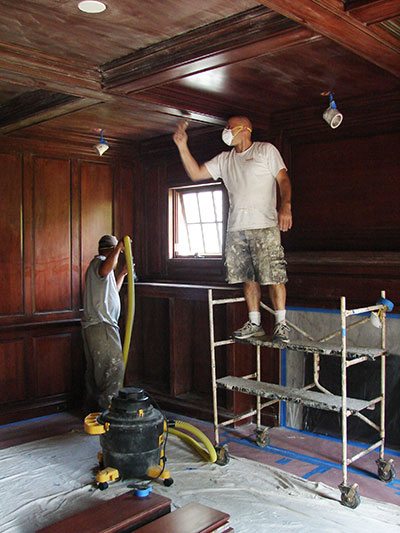
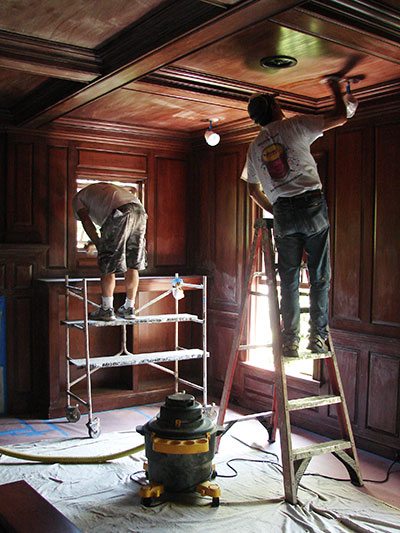
Silva’s crew must go over every square inch of the room (including its coffered ceiling) before they attempt a single brushstroke with their first of two coats of primer. Tony oversees this entire operation with an eagle eye. He works in sync with his crew who are spread across the scaffolding. He watches every move, every stroke—a master puppeteer. If weather cooperates, the application will take several days. Four coats are applied, hopefully in four days.
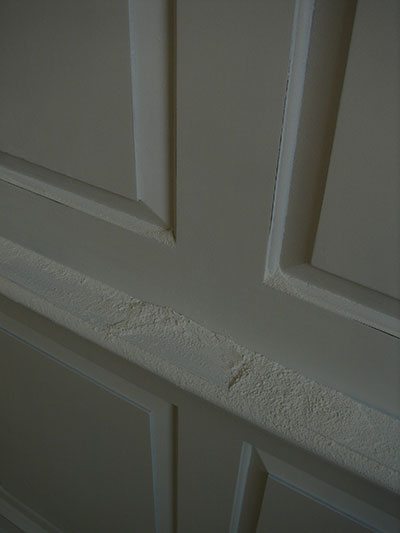
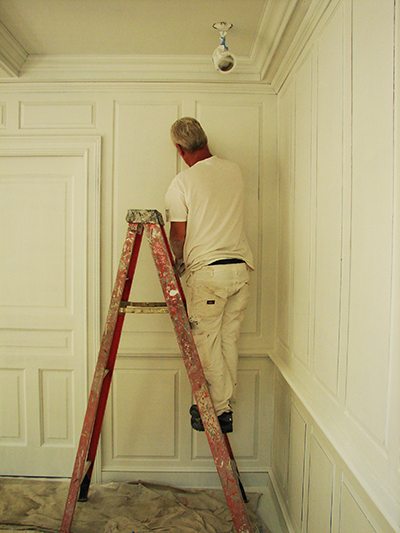
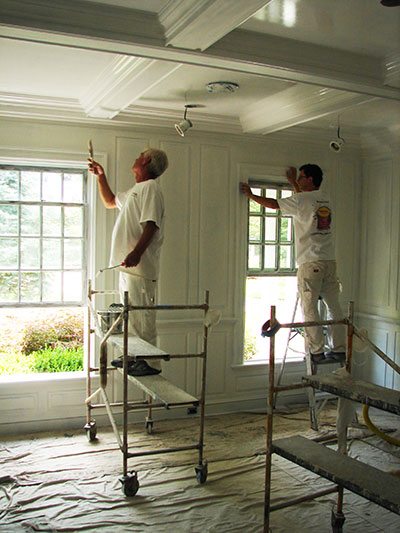

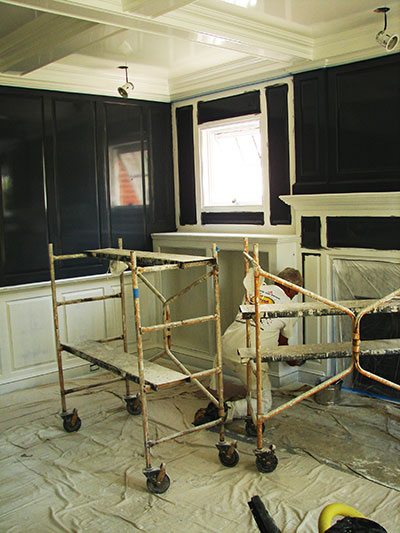
With each coat, the surface of the walls seems to become harder and more reflective. This “mirror effect” gives the impression you could walk through it as though it were Alice’s looking glass. The high gloss of the Hollandlac Brilliant now graces the drawing room with its unexpected glow. The coffered ceiling contrasts with its brilliant stark white.
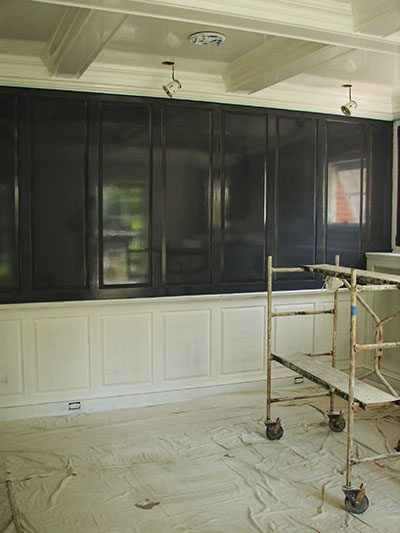
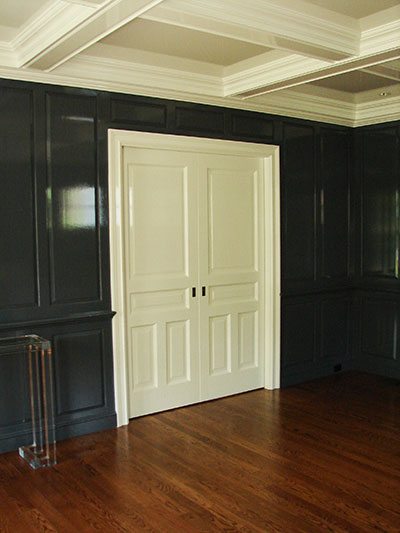
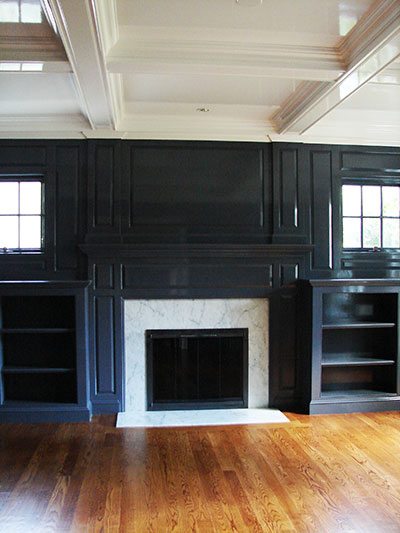
The room has taken on an intimacy that suggests quiet meditation. With the loss of the dark-paneled mahogany, the drawing room no longer suggests “dad’s den”. What might have once been a dark lair has been transformed into an inclusive and light-filled space. The drawing room in its current incarnation certainly makes a statement although it now flows more naturally into the remainder of the house. It is no longer starkly set apart with its former suggestion of a men’s club. The family looks forward to using the drawing room for quieter pursuits: reading, puzzles, cribbage and cards. In fact, the plan is to bar the use of electronics in this one space. I can well picture this family congregated around a winter fire, the reflection of the flames dancing within those mystical panels of grey.
Designer Marc Langlois goes at life in broad strokes. His original profession as a fashion photographer, shooting all over the world for Vogue, led him to the decision to pursue interior design some fifteen years ago. His clients’ residences range from New England to Manhattan to L.A.
Share
![NEH-Logo_Black[1] NEH-Logo_Black[1]](https://b2915716.smushcdn.com/2915716/wp-content/uploads/2022/08/NEH-Logo_Black1-300x162.jpg?lossy=1&strip=1&webp=1)








